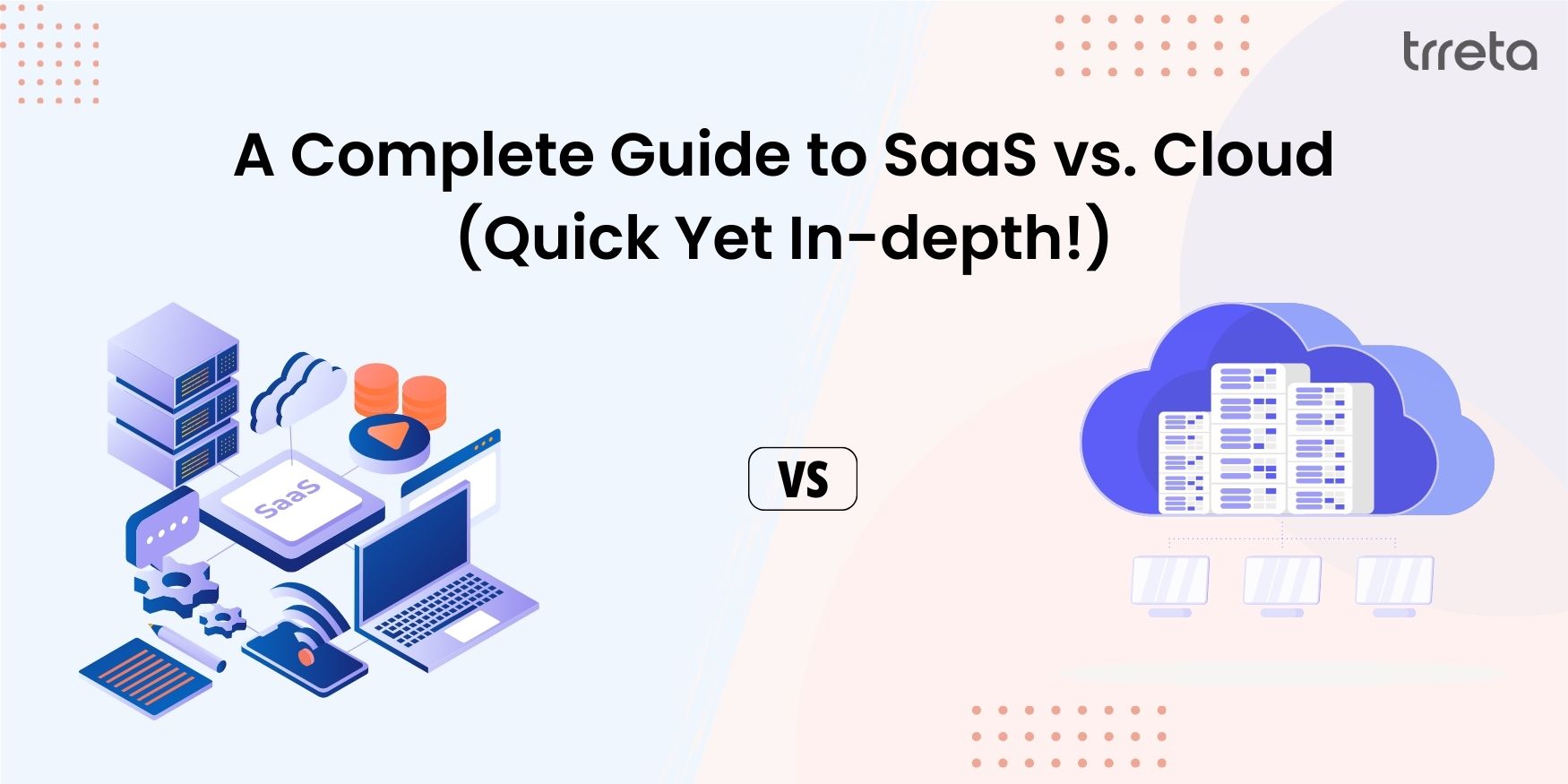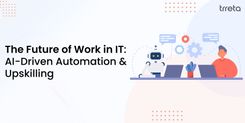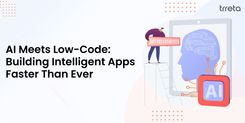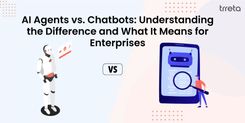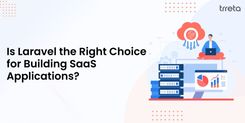In the business technology world, there are a few terms that are widely used yet misunderstood. And one of them is SaaS vs. Cloud.
Many executives, leaders, and business owners hear terms like SaaS and Cloud quite often and use them interchangeably, but the truth is, they both serve very different purposes.
And when you don’t have enough clarity about both of these terms and what exact role they play, you may miss opportunities or have costly misalignments in IT strategy.
For enterprises and startups, understanding the distinction between cloud computing (the broader infrastructure) and SaaS (a ready-to-use software layer) is quite important - because choosing the wrong approach may result in wasted investment, security challenges, or slow scalability.
In this guide, we have discussed cloud vs SaaS, what is cloud software as a service, what is software as a service in cloud computing, how that is different from cloud software as a service, and cloud-based platform as a service, while understanding the basics of SaaS and cloud computing.
What Is Cloud Computing?
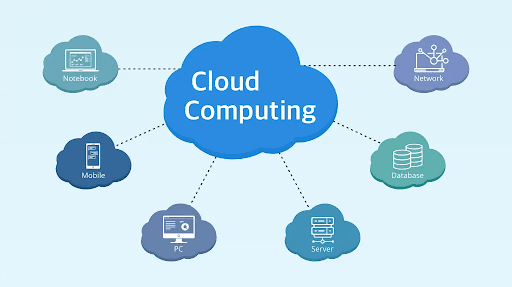
At its core, cloud computing means delivering computing services like storage, networking, servers, or platforms over the internet.
So, instead of investing in physical infrastructure, businesses can scale resources on demand, paying only for what they use.
The National Institute of Standards and Technology (NIST) defines cloud with five essential traits:
- On-demand self-service – resources available instantly, without human intervention
- Broad network access – accessible anywhere, from multiple devices
- Resource pooling – infrastructure shared efficiently across clients
- Rapid elasticity – scale up or down seamlessly
- Measured service – pay only for usage
Think of the cloud-based platform as a service as leasing a flexible “technology factory.” It lets you decide whether you want just raw materials (IaaS), building blocks (PaaS), or ready-made applications (SaaS).
And big players Amazon AWS, Microsoft Azure, and Google Cloud dominate this space by giving businesses the flexibility to host applications, process data, or deploy AI at scale.
What Is Software as a Service (SaaS)?
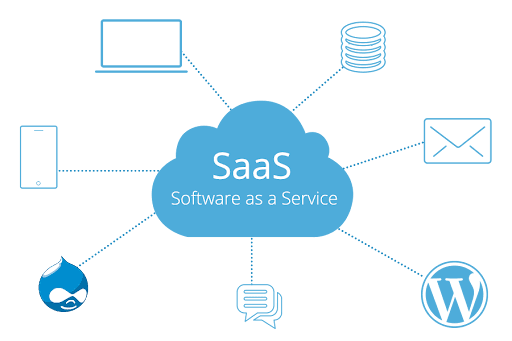
Now let’s zoom in on what Software as a Service (SaaS) is. Unlike cloud’s broader infrastructure, SaaS is a ready-to-use software application delivered over the internet.
With SaaS architecture in cloud computing, you don’t need to install or maintain servers because the provider handles everything, from updates to security patches.
And some of the examples of SaaS include Salesforce, Slack, Zoom, and Google Workspace. All run on cloud infrastructure, but they sit at the application layer, giving users a polished, functional product immediately.
Key advantages of SaaS include -
- Scalability – add or reduce users easily
- No maintenance – provider manages updates and infrastructure
- Multi-tenancy – many users share one platform securely
- Cost predictability – subscription pricing models
So, if the cloud is like owning the building blocks of technology, SaaS is the finished office you walk into with fully furnished, wired, and ready for business.
Side-by-Side Comparison: Cloud vs. SaaS
Here’s a quick comparison between SaaS Vs Cloud
| Aspect | Cloud Computing | SaaS |
| Definition | Infrastructure, platforms, and services delivered over the internet | Ready-to-use software applications delivered online |
| Core Model | IaaS, PaaS, SaaS | Pure application layer (built on cloud) |
| Control & Flexibility | High – businesses configure resources | Low – provider fully manages the environment |
| Deployment | Customized stacks, tailored to needs | Uniform software, quick to launch |
| Use Case | Hosting apps, DevOps, compliance-heavy systems | Fast deployment of business tools (CRM, HR, communication) |
Why Businesses Need to Choose SaaS vs. Traditional Cloud?

For organizations, the decision is not about cloud vs SaaS in isolation, but about which solves the problem faster and smarter.
Here’s what you need to keep in mind while making a choice -
- SaaS cloud storage and business apps make sense for teams needing rapid deployment, low IT burden, and predictable costs. For example, a small eCommerce business can run entirely on Shopify and Google Workspace without managing servers.
- On the other hand, Cloud computing is the smarter choice when enterprises require custom infrastructure, regulatory compliance, or deep integrations. For instance, a fintech startup may need AWS cloud for data residency and to deploy proprietary fraud-detection algorithms.
In short, SaaS delivers speed, while cloud offers flexibility.
The Role of SaaS Architecture in Cloud Computing
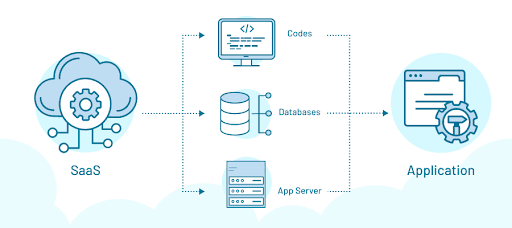
Lately, if you have been wondering what the role of SaaS architecture in cloud computing is, let us tell you that every SaaS product ultimately runs on top of cloud computing.
The defining characteristic here is multi-tenant architecture: a single software instance serves multiple customers while keeping their data isolated.
SaaS architecture in cloud computing enables:
- Economies of scale – updates rolled out once benefit all users
- Lighter footprint – businesses don’t manage infrastructure
- Faster innovation – providers update continuously
So when we talk about SaaS in cloud computing, it’s about using the cloud as the foundation and layering SaaS on top for end-user value.
What is Cloud-Based Platform as a Service (PaaS)?
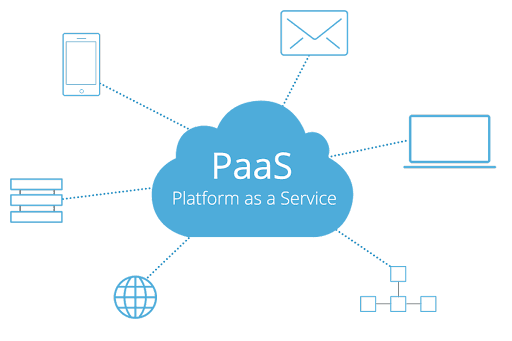
There’s a third section that falls between Infrastructure as a Service (IaaS) and Software as a Service (SaaS) called Platform as a Service (PaaS).
In simple words, PaaS is a managed environment where developers can build apps without worrying about hardware or operating systems.
Think of PaaS as renting a “developer’s workshop” in the cloud. You don’t manage the plumbing or electricity; you just build. Some of the examples of PaaS include Google App Engine and Heroku.
For companies weighing SaaS vs cloud computing, PaaS becomes a bridge: it offers flexibility for custom app development while eliminating infrastructure headaches.
Risks & Governance Considerations to Consider While Choosing a SaaS Cloud Solution
While there are definitely obvious benefits of SaaS cloud solutions, here are some risks that leaders should weigh -
- Cloud cost overruns: Without visibility or financial governance (FinOps), cloud bills can balloon.
- Data security concerns: Shared environments require strict enterprise mobile application security measures like encryption and IAM.
- Vendor lock-in: Over-reliance on one provider may limit long-term flexibility.
The good news is that smart companies address these risks with multi-cloud strategies, security audits, and FinOps integration from the start.
How to Choose - SaaS, Cloud, or Both?
Well, there’s no one-size-fits-all approach when it comes to choosing SaaS or cloud.
But here’s some foundational guidance that you can use to make a better choice -
- Choose SaaS when:
-
-
You need fast deployment and minimal IT complexity
-
Predictable subscription pricing matters
-
Apps like CRM, HR, or collaboration are core needs
-
- Choose Cloud when:
-
-
Customization and compliance are priorities
-
You expect to scale workloads significantly
-
Integration with proprietary software is required
-
-
Choose Both when:
-
You want standardized tools (like Salesforce) but also need custom development hosted on AWS or Azure
-
You’re blending agility (SaaS) with innovation (cloud)
-
Today, some of the most innovative companies are building hybrid SaaS + cloud strategies, using SaaS for standard apps and cloud for competitive differentiation.
And if you’re exploring this blended path, our SaaS Application Development services can guide you.
Partner with Trreta to Choose Strategy Over Technology
So the real takeaway of SaaS vs Cloud is this: SaaS is not the same as Cloud.
SaaS simplifies software consumption, while the cloud provides the infrastructure backbone. Together, they can create an IT environment that balances speed, flexibility, and long-term scalability.
At Trreta Techlabs, we help organizations design the right balance between SaaS and cloud, based on business goals and not just tech trends.
Whether you’re looking to migrate to SaaS, build on the cloud, or integrate both, our team ensures security, scalability, and ROI remain front and center.
👉 Need help creating a hybrid SaaS + cloud architecture? Contact us today.
FAQs
Q1. Is SaaS part of cloud computing?
Yes. SaaS is a subset of cloud computing, focused on delivering fully managed applications.
Q2. What is cloud software as a service?
In simple words, Software as a Service (SaaS) is a software delivered online, hosted on cloud infrastructure, where providers manage everything from security to updates.
Q3. How does SaaS cloud storage differ from IaaS?
The main difference between SaaS and IaaS cloud storage is that SaaS cloud storage gives you ready-to-use apps (like Google Drive), while IaaS provides the raw storage infrastructure you manage yourself.
Q4. What is SaaS architecture in cloud computing?
SaaS architecture in cloud computing is a multi-tenant design where one software instance serves multiple clients securely on cloud infrastructure.
Q5. When should my business choose SaaS vs. cloud solutions?
Based on our experience, we can say that SaaS is best for speed and cost control, while cloud is better for customization and compliance-heavy workloads. And some companies also prefer a mixture of both.
